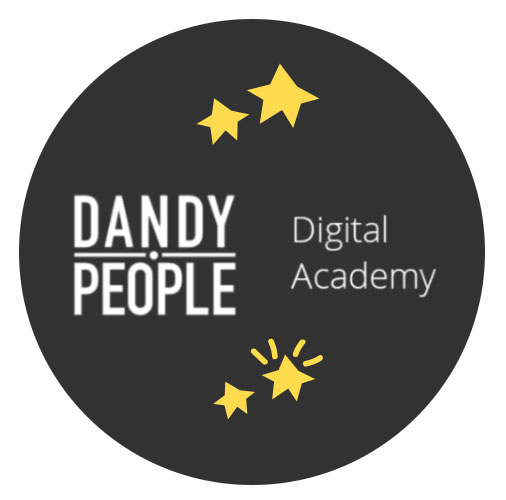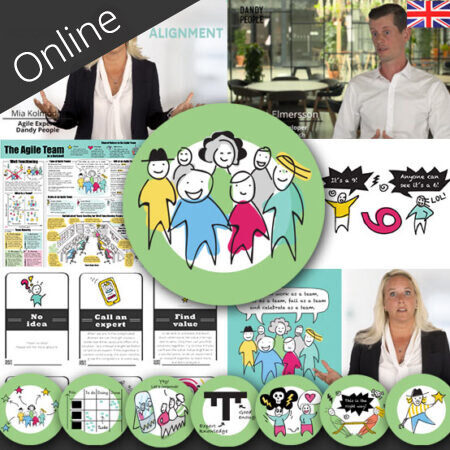The retrospective is the improvement engine in the Agile team. It gives the team a structured way to inspect and adapt, making continuous improvements in their processes and ways of working. It is often done once every sprint when working in Scrum, or every second week when working in Kanban. But it could also be held at the end of a bigger project with everyone involved, or once every quarter across all Agile teams and stakeholders depending on what you want to improve. The purpose is to uncover what is working well that you should do more of, and what could be improved next to make the team even better. That is why it is the by far the most important ceremony and should be guarded and never down-prioritized.
In the retrospective, the team focuses on what worked well and what could be improved during the last sprint. There are many different ways to facilitate a retrospective and if you search for “Agile Retrospective” you get more than 2 000 000 results.
It is traditionally the Scrum Master who is responsible for improving the team’s process and creating a well-functioning and high-performing team, and thereby to facilitate the retrospective. A skilled Scrum Master can pick the right type of retrospective depending on the maturity of the team and whatever issues the team has to deal with at the moment, making sure all voices are heard and facilitating it in a way that enables the team to come up with the improvements and actions needed to make adjustments and experiments in the next sprint.
Usually a retrospective for a 2 week sprint is a 1-2 hour workshop. If you are conducting a big retrospective for many teams or for a longer period of time, you might want to add more time – and also do some more preparations beforehand, but a common sprint retrospective is usually covered in 1-2 hours with no more preparations than for the Scrum Master to plan the facilitation and invite all participants.

The 5 phases of a retrospective
Retrospectives are usually built up by five phases, with different flavors of facilitation:
- Setting the stage
- Collecting and mapping data
- Prioritization
- Ideating and coming up with what actions to take
- Closing the retrospective
Make sure to make space for the improvement work in the team’s daily work
The actions from the sprint should be taken, or started, during the next sprint. And it is up to the team to decide who will do what, just like any other task on the sprint board, it is not the Scrum Master’s job to implement the improvements.
The best way to make this happen is usually to put each action in a story and to put it up on the Scrum or Kanban board along with the rest of the work- these are improvement stories that should be in every sprint. If some of the problems are impossible for the team to solve by themselves, the action should be brought to someone who can help. Some teams have a so-called “Scrum of Scrum” where all Scrum Masters meet up regularly to share their improvement areas and the actions that they need support with, or you could use a “Management Action Door”, where all teams put up actions that they need help with and meet up with people who can help on a regular basis to make it happen. You can probably figure out more ways to make it happen, what is important is that the environment for the team can be improved also with support from outside their own possible mandates and capabilities.
Tip:
If your team has a working agreement you ask them to bring it to the retrospectives, to reflect on how well they are following it and if it is helping the team to work well together. If your team doesn’t have one, spend 15-20 minutes on your first retrospective to create it.

Facilitating your first Retrospective
Preparations:
- Book the time and place and invite everyone, make sure the room has a whiteboard
- Create a visual agenda for you and the team to follow
- Bring sticky notes and pens for everyone.
If you have thicker pens, like Sharpies, that is better since the text is easier for everyone to read from a distance
The timeboxing of each step is just a suggestion for a 1-hour retrospective.
1. Setting the stage – 10 min
To set the stage means that the facilitator lets everyone know why they are there, and what to expect from the time you are spending together. The retrospective could be about a specific topic that is important for the team or just the previous 2 weeks of work. As the facilitator, you need to make sure every voice is being heard in the room. A great way is usually to get everyone to just say something in the first 5 minutes of the retrospective.
If the topic is the past 2 weeks of work, one way to help people remember what has happened is to draw a horizontal line across the whiteboard and ask people to help put up reference events during the sprint on the line. It could be stuff like if a team member got sick, a meeting with users to get feedback or other activities that could act as reference points to improve everyone’s recollection, or could have an impact on the team’s work, capacity or mood. Above the line you then write “Positive – keep doing it”, and below the line, you write “Could be improved”
2. Collecting and mapping the data – 20 min
The data is gathered during a short timebox and the facilitator asks everyone to join in to gather it. We want as much data as we can get, but there is no need to gather ALL the data. The best way to get everyone’s view is to ask people to think for themselves in silence and write down their thoughts on sticky notes. In that way you enable everyone to participate, also the less vocal people.
As the facilitator you let everyone know that you together have a timebox of 5 minutes to come up with as much as possible of what has happened during the sprint and that you will do it in silence.
Once the 5 minutes are over you check so that everyone is done, and ask them to wrap up if they are still writing.
Mapping the data is now something you do together. Since you have the horizontal line on the board you ask people to come up to the board and read out loud what they have on their sticky notes and put them either above or below the line depending on how they feel it matches the headlines. You can also ask them to put similar notes side by side to create clusters continuously, or you as a facilitator could help to do it.
3. Prioritization – 5 min
Once everyone is done with mapping the data you can start to prioritize what to improve – and also what to do more of that helped the team.
One common way to prioritize is to use dot voting. Dot voting means that everyone gets a certain amount of dots that they put on what they believe is most important. Give everyone 3 to 5 dots that they can put on different topics, or on the same topic if they like, and tell them that they can vote for both what to do more of (because this will also improve things) and on what to improve.
4. Ideating and coming up with what actions to take – 15 min
Now you have the team’s prioritization and you can move on to creating actions!
By this time in the retrospective, everyone in the room should understand the issue and be able to join in and come up with ideas on how to solve them. What you need is everyone to be able to feel safe and talk freely about what could be done. If you feel hesitant that your team can do this in a discussion, or build on the ideas of others in a good way, without perhaps only one person’s voice being heard, you could again timebox ideation to 5 minutes and ask them to put down their ideas for any of the prioritized areas in silence. Afterward, read them out loud, and after that have a discussion on what idea or combination of ideas to go with.
Another way of coming up with ideas can be to ask people to divide into groups of 2-3 people for the different prioritized areas and together come up with ideas on each area in a timebox of perhaps a maximum of 2-3 minutes per area, and after that present their suggestions. After all, suggestions are presented you can if needed do another dot voting to decide together on what actions to go within this sprint.
5. Closing the retrospective – 10 min
The last step of the retrospective is closing. Here you as a facilitator could let everyone know what will happen now with your actions, but it is also a great time to give credit to people in the team and to give everyone a feeling of belonging.
To give credit you can ask everyone to take 2 minutes to write down one thing you are grateful for in someone else in the team, and then ask them to read it out and give the sticky note to that person. Another way of doing it is to put everyone in a circle and celebrate one person at a time by having 2-3 people say something appreciative about that person’s actions towards them during the past sprint. Give people a few minutes at the start to think about what to say and then go around the circle.
Make sure to make space for the improvement work in the team’s daily work
The actions from the sprint should be taken, or started, during the next sprint. And it is up to the team to decide who will do it, just as any other task on the sprint board, it is not the Scrum Master’s job to implement the improvements.
The best way to make that happen is usually to put each action in a story and put it up on the Scrum or Kanban board along with the rest of the work, these are improvement stories that should be in every sprint. If some of the problems are impossible for the team to solve by themselves the action should be brought to someone who can help. Some teams have “Scrum of Scrum” where all Scrum Masters meet up regularly to share the improvement areas and actions that they need support with, or you could use a “Management Action Door” where all teams put up actions they need help with and meet up with people who can help make it happen on a regular basis. You can probably figure out more ways to make it work, what is important is that the environment for the team can be improved also with the support outside their own possible mandates and capabilities.
Want to learn more?
This content is part of our self paced online training Agile Product Development Process and Organization In a Nutshell Training and Toolbox in our Digital Academy.
Agile Online Trainings at your own pace, in a fun, brain-friendly and engaging interactive format. Get access now!




